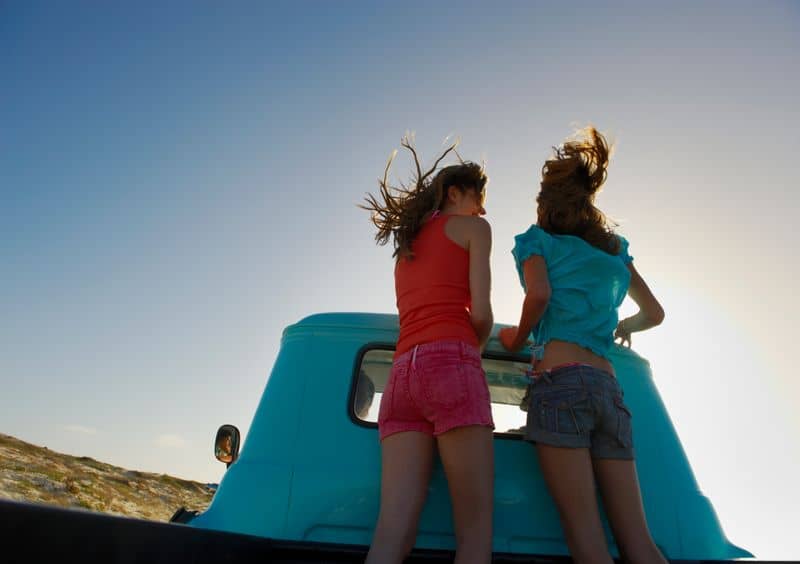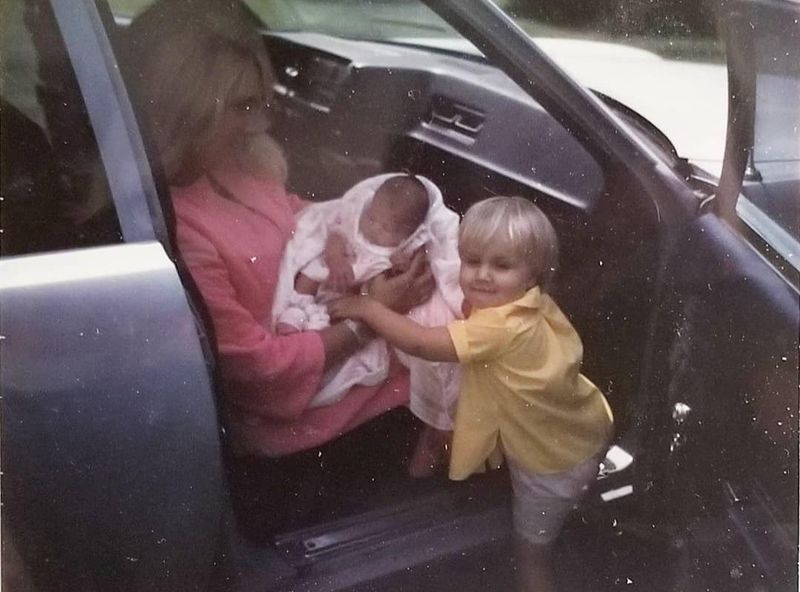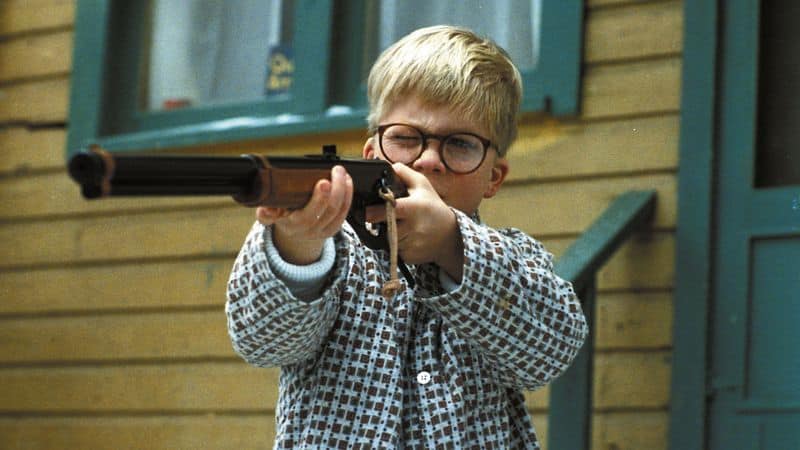The 1960s were a time of great change and experimentation, especially for young people. It was an era defined by cultural shifts, rebellious spirits, and a sense of freedom that encouraged kids to explore life unrestricted. However, many activities that were once considered normal are now looked upon with a different perspective due to evolving societal norms and laws. In this blog post, we will delve into 12 things kids did in the ‘60s that, given today’s legal and safety standards, would be considered illegal or at least highly frowned upon. Join us on this nostalgic journey to explore how much has changed over the decades.
1. Riding in the Back of a Pickup Truck

Back in the ’60s, it was common for kids to pile into the back of a pickup truck for a ride. This was especially popular for trips to the countryside or spontaneous joyrides. The experience was thrilling, with the wind blowing through their hair and an unobstructed view of the sky. However, this lack of safety measures is alarming today. Modern laws require seat belts and proper seating within vehicles to ensure passenger safety. Allowing children to travel unsecured in the back of a truck is now illegal due to the evident risks involved.
2. Playing with Fireworks Unsupervised

In the ’60s, kids often played with fireworks without adult supervision, especially during celebrations. The fascination with colorful explosions made these activities a popular pastime. However, handling fireworks is risky, posing dangers such as burns and injuries. Over time, regulations have tightened, requiring adult supervision or even restricting certain types of fireworks. Today, children are not allowed to light fireworks unsupervised, with safety being a top priority. This ensures that the fun doesn’t turn into a hazardous experience.
3. Walking Home Alone at Night

The ’60s were a different time when kids often walked home alone, even after dark. This independence was seen as a rite of passage, teaching responsibility and self-reliance. However, with growing concerns about child safety and crime rates, allowing young children to walk home alone is now discouraged. Laws and community guidelines stress parental supervision or accompaniment during late hours. Although independence is important, ensuring children’s safety is paramount in today’s society.
4. Smoking Candy Cigarettes

Candy cigarettes were all the rage in the ’60s, with kids pretending to smoke like adults. These sugar sticks, mimicking real cigarettes, were part of a playful routine that seemed innocent at the time. Yet, as awareness about smoking dangers grew, so did concerns about candy cigarettes normalizing smoking for children. Nowadays, such products face strong criticism and are often banned, as they can indirectly promote unhealthy habits. Encouraging healthy choices for children is a priority now.
5. Riding Bicycles Without Helmets

Cycling was a favorite pastime for kids in the ’60s, often done without helmets. The thrill of the ride and the sense of adventure often overshadowed safety considerations. Today, wearing helmets is a legal requirement in many places, recognizing the importance of head safety during falls or accidents. Helmets are crucial in preventing serious injuries, making cycling a safer activity. Understanding and enforcing such safety measures is essential for ensuring children’s well-being.
6. Drinking from Garden Hoses

On hot summer days, drinking from a garden hose was a common sight. The cool water provided instant refreshment during outdoor play. However, concerns about water contamination and bacteria have since emerged. Drinking from hoses is discouraged today due to potential health risks from chemicals and bacteria that can reside in hoses. Modern awareness campaigns stress the importance of safe drinking water sources, highlighting a shift towards more health-conscious practices.
7. Playing in Abandoned Buildings

Exploring abandoned buildings was an adventurous pursuit for many ’60s kids. These locations offered excitement and mystery, perfect for imaginative play. While thrilling, these activities were unsafe due to structural instability and potential health hazards. Nowadays, laws prevent access to such sites, emphasizing safety and legality. Trespassing is illegal, and promoting safe exploration through supervised environments is encouraged. Understanding risks and ensuring safety is a priority in preserving children’s adventurous spirits.
8. Driving Without Seat Belts

In the ’60s, seat belts were not a standard feature in vehicles, and wearing them wasn’t a legal requirement. Families often traveled without fastening seat belts, unaware of the risks involved. Over time, the introduction of safety regulations mandated seat belt usage to protect passengers during accidents. Today, not wearing a seat belt is illegal, with laws strictly enforcing safety to reduce fatalities and injuries. Adopting safe practices is crucial for protecting lives on the road.
9. Roaming Wild Without Check-Ins

Children of the ’60s often roamed freely in neighborhoods, with minimal check-ins with parents. This freedom fostered independence and social skills. However, concerns about safety and communication have changed this practice. Parents now emphasize regular check-ins and supervision to ensure children’s safety. Technology also plays a role, with devices allowing constant communication. Balancing freedom and safety is a key focus for modern parenting, adapting to changing societal norms.
10. Using BB Guns for Play

BB guns were a popular toy among kids in the ’60s, often used for playful battles or target practice. While they provided excitement, they also posed risks of injury if mishandled. Modern regulations classify BB guns under firearms, requiring adult supervision and safety education. Today, safety is prioritized to prevent accidents and ensure responsible usage. Promoting safe play and understanding weapon safety are vital for preventing potential harm.
11. Jumping from Heights into Water

Jumping off cliffs or bridges into water was a thrilling activity for adventurous kids in the ’60s. The rush of adrenaline and the splash of water made it a favorite summer activity. However, this comes with significant risks, including injuries from unseen obstacles or shallow waters. Today, such activities are heavily regulated or prohibited to prevent accidents. Promoting safer alternatives ensures kids can still enjoy adventure without compromising safety.
12. Hitchhiking Alone

Hitchhiking was a common means of travel for kids in the ’60s, seen as an adventurous way to explore. However, modern awareness of potential dangers, including abduction and crime, has led to laws discouraging this practice. Today, hitchhiking alone, especially for children, is considered unsafe and is generally illegal. Emphasizing safe travel methods and supervision is essential for protecting young adventurers. Ensuring safety and reducing risks remain top priorities in today’s society.
13. Climbing Trees Without a Second Thought

Back in the ’60s, climbing trees was a beloved pastime, and kids didn’t think twice before scrambling up the tallest branches. It was all about the thrill of the climb, the challenge of reaching the top, and the pride of conquering nature’s playground. Safety gear? Never heard of it. Cuts, scrapes, and even broken bones were just part of the adventure. Today, with liability concerns and stricter safety guidelines, many schools and parks discourage or outright ban tree climbing. While kids still love to climb, modern parents and playgrounds lean toward safer alternatives like climbing walls.

Well, hello there!
My name is Jennifer. Besides being an orthodontist, I am a mother to 3 playful boys. In this motherhood journey, I can say I will never know everything. That’s why I always strive to read a lot, and that’s why I started writing about all the smithereens I came across so that you can have everything in one place! Enjoy and stay positive; you’ve got this!

